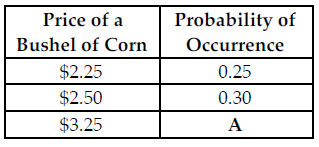Why do we need a units-free measure of the responsiveness of the quantity supplied of a good or service to a change in its price?
What will be an ideal response?
The elasticity of supply is a units-free measure. We need a units-free measure of the elasticity of supply for the same reason we need a units-free measure of the elasticity of demand: Because the value of the elasticity of supply is independent of the units used to measure the price and quantity of the good, the elasticity of supply can be compared across the same good when quantity is measured in different units and/or the price is measured in different currencies. In addition, the elasticities of supply of different goods also can be compared even though they are measured in different units.
You might also like to view...
A recession in the rest of the world means U.S
A) exports increase. B) aggregate demand decreases. C) potential GDP decreases. D) potential GDP increases. E) aggregate supply decreases.
Refer to Figure 3-4. At a price of $25, how many units will be supplied?
A) 400 B) 500 C) 600 D) 800
If demand is taken into account, firms that use cost-plus pricing can adjust price by
A) letting sales fall, but hold the markup constant if demand falls. B) lowering markups on price-elastic goods and raising markups on price-inelastic goods. C) letting sales rise, but hold the markup constant if demand rises. D) raising markups on price-elastic goods and lowering markups on price-inelastic goods.
Refer to the table below. If these are the only three price options for a bushel of corn, what is the value of A?

The above table provides the possible prices for a bushel of corn next year along with the associated probabilities (in percent).
A) 0.55
B) 0.45
C) 0.25
D) 0.30